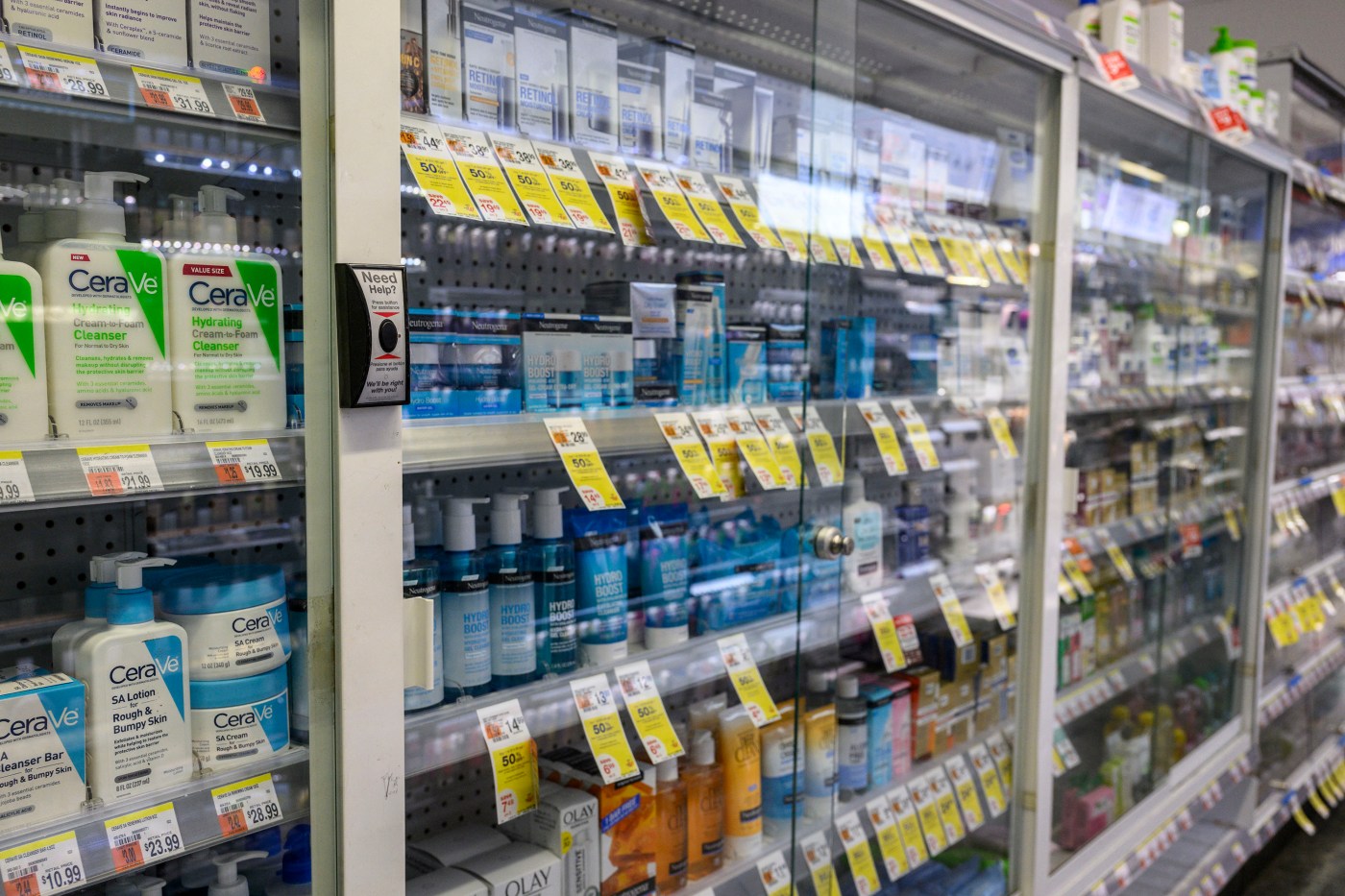
Higgins: Automation makes retail theft easier
Headed into the holiday season, the retail industry is wrangling with a surge in shoplifting and possible solutions to prevent theft. The upsurge may be an inadvertent consequence of another trend: automation.
With stores now having fewer people minding them, thieves have felt emboldened. Trade groups are pushing for new federal legislation to help fix the problem. A better solution would be for businesses to realize that workers are a greater anti-theft asset than they think.
Retail businesses are being hit hard by theft. The National Retail Federation (NRF) trade group reported last year that “shrink,” the industry term for store theft, accounted for $112.1 billion in losses in 2022 across the industry, up from $93.9 billion in 2021. The NRF has yet to release figures for 2023, but an industry source indicated the problem has not abated.
A smaller survey by Jack L. Hayes International, a loss-prevention consulting firm, focusing on just 22,000 stores, put their total losses from theft at $7.1 billion in 2022, up from $4.9 billion in 2019. This covers everything from the traditional “five-finger discount” of common thieves snatching things like candy bars to organized criminal groups that target stores, swoop in and rush out with as much as they can.
Big time theft isn’t just happening at large urban centers like New York. Newsweek reports that Chattanooga, Tennessee, had the nation’s highest rate of shoplifting at 89.83 incidents per 100,000 people. Next was Fayetteville, North Carolina, at 83.43. The caveat here is that frequently stores don’t report shoplifting incidents, not seeing it as worth the time and trouble to pursue in the courts. Therefore, most experts assume there are gaps in the data.
As many consumers have noticed, the industry is responding by putting goods behind lock and key. The National Retail Federation says stores are also looking for high-tech solutions to deter theft.
But efforts at legislative fixes seem irresistible. The Combating Organized Retail Crime Act, for example, would create an organized retail theft division within the Department of Homeland Security. CNBC reports that since 2022 nine states have passed laws increasing the penalty for retail theft and many other states are considering it. Florida made “organized retail theft” a felony.
A much more direct, easier solution might be the oldest and simplest one: Hire more people to monitor the floors. Have more watch the stores. This will reduce the opportunities for would-be thieves and embolden store owners and workers to stop theft when it happens. It will also make the stores appear to be more a part of the community where friends and neighbors work and less like the large vending machines they have become.
Anybody who has patronized a major retail store in recent years, especially in urban areas, has experienced locked up stuff and the way stores have become ghost towns largely devoid of staff. Most stores now use primarily self-checkout and have skeleton crews running the location. Trying to purchase something that has been locked away can seem a tedious, time-consuming ordeal for a customer if there’s no worker nearby.
With so few people minding the store, is it any wonder that theft is on the rise? Shoplifting is a crime of opportunity, after all, and opportunities have never been more abundant. “(T)here has been rather a lot of self-service checkout and how the reduced guardianship provided by store associates can result in higher levels of theft. And of course, psychologically, thieves feel more comfortable/less problematic stealing from a machine than a person,” Emmeline Taylor, professor of criminology at the University of London, said in an email.
The executives running the retail stores have realized this problem, says journalist Marc Fisher, author of a recent study on the rise of shoplifting for the Atlantic Monthly. They’re struggling to figure out what to do, Fisher told this author.
“All of the retail industry executives, retail security experts and criminologists I spoke with cited automation as one of the key causes of the current crisis. The shift in recent decades toward automating everything from checkout to store security (cameras, AI monitors, programs such as those I described in the piece) has been accompanied by big cuts in staffing, which in turn came about in part as a cost-saving measure and, perhaps more often, because of the difficulty in hiring and retaining shop workers,” Fisher said in an email.
In short, there is still no substitute for a pair of human hands and eyes. Most stores have cameras watching all areas, for example, but cameras still need someone to monitor them in addition to people on the floor who can be alerted to stop would-be thieves. Otherwise, the cameras are just an elaborate home-movie system.
The lack of store staff means that not only are there fewer workers to spot shoplifting, but they are more likely to be reluctant to try to stop thieves because they have fewer co-workers to back them up should the situation escalate. Even if the workers have the backbone to try, the stores often don’t want them to act, fearing injury and potential liability. NRF reported in 2023 that 41% of surveyed retailers said that “no employees are authorized to stop or apprehend shoplifters,” up from 38% in 2022.
Susan Judith, a D.C.-based communications director, witnessed this when she worked for a major retail chain during the COVID pandemic. She declines to identify her client but told this author: “They had a policy of not engaging shoplifters. Employees would get in trouble for trying to stop theft. Needless to say, word got out that if you rolled up on one of these stores and helped yourself to merchandise, no one was authorized to apprehend or even engage you. Amazingly, that led to an unsustainable level of shrink.”
Management needs to remember that workers are an asset, not just for labor productivity but also for intangible human qualities they bring to the shopping experience: the pride they bring to making sure their section is clean and well stocked; the assistance they can give to customers searching for the right item; or the ability to respond to unusual situations like a customer having a health emergency. Thieves are less likely to steal if they can see multiple people watching them rather than just one.
Fixing the shoplifting crisis does not require elaborate federal legislation or tougher criminal sentences or stricter security measures or more elaborate surveillance. It requires more workers. That is something management can easily fix.
Sean Higgins is a research fellow specializing in labor policy for the Competitive Enterprise Institute/Tribune News Service


